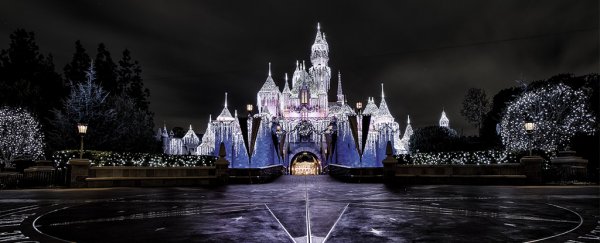Disney has something of a cult following, so it shouldn't be much of a surprise that some people want to stay in the entertainment giant's theme parks… forever.
As a report in the Wall Street Journal has just confirmed, some people really try to do that - by having loved ones scatter their cremains.
At Disneyland park in Anaheim, California, and Walt Disney World in Bay Lake, Florida, it happens so frequently that staff have a special code to call in when they spot any sign of cremains: "HEPA cleanup."
Staff then come in with a vacuum cleaner equipped with a high-efficiency particulate air (HEPA) filter, specifically designed for picking up the very finest particles, and vacuum up the remains, possibly for disposal into a garbage bin.
"Human ashes have been spread in flower beds, on bushes and on Magic Kingdom lawns; outside the park gates and during fireworks displays; on Pirates of the Caribbean and in the moat underneath the flying elephants of the Dumbo ride," the WSJ's reports.
"Most frequently of all, according to custodians and park workers, they've been dispersed throughout the Haunted Mansion, the 49-year-old attraction featuring an eerie old estate full of imaginary ghosts."
Human cremains - a portmanteau of "cremated" and "remains" - are not actually ashes in the typical sense. During the cremation process, soft tissue vaporises under the extreme heat; all that's left is calcined bone, which the crematorium crushes into a powder.
Because of that extreme heat, any micro-organisms in the body are also burned away; there's no public health risk associated with cremains. But that doesn't mean Disney wants them scattered around their parks.
"This type of behaviour is strictly prohibited and unlawful," a Disney spokesperson told the WSJ. "Guests who attempt to do so will be escorted off property."
In fact, in most of the United States, scattering cremains on private property without permission is considered a misdemeanour, and can incur a penalty such as a fine or community service.
This includes amusement parks, museums, and sports stadiums, as one man found out to his detriment when he dumped his mother's cremains on a sports field in 2005. Although it is worth noting that he was arrested and charged with defiant trespass, not reckless mum-scattering.
But there are also places where it is legal to scatter cremains in the US. National parks are allowed, if the bereaved have the relevant permit, and make sure to scatter away from high-traffic areas, such as hiking trails and playgrounds.
The sea is also permitted, but only at a distance of at least three nautical miles from land, according to Environmental Protection Agency guidelines.
Similar laws exist in Australia and in the United Kingdom, where it is lawful to scatter cremains on public or private land, provided you have the relevant permission from the landowner, local parks authority, or government environmental agency.
It's worth noting that the phosphates in the calcined bone dust are a natural fertiliser - in fact, animal bone is sometimes used this way - which can have an environmental impact by stimulating plant growth.
On the other hand, human cremains can have a high salt content, and also have high pH, which can be toxic to certain plants. In 2008, the Jane Austen's House Museum in England banned people from scattering cremains in the garden of the beloved author's former home, noting, among other reasons, that doing so "is of no benefit to the garden!"
And while there are products that help you convert your loved one's cremains into a beautiful plant, you can't just go putting them anywhere willy-nilly either; as the Brontë Society noted in 2013, the impact of mourners planting memorial plants on the moors had been destroying the local ecosystems.
If nothing else, it's also just terribly impolite to leave your loved one's powdered bones where someone else might have to clean them up.
And do you really want them to end up in a dustbin?
